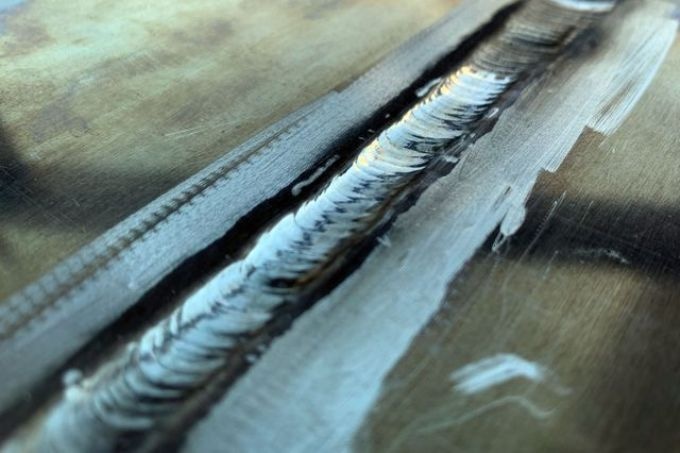Jan 25 2019
Developed in the 1940s, an aluminum alloy has traditionally shown promise for using in automobile manufacturing, except for one major barrier.
 Two pieces of aluminum alloy 7075 welded together using a nanoparticle-enhanced filler wire. (Image credit: UCLA)
Two pieces of aluminum alloy 7075 welded together using a nanoparticle-enhanced filler wire. (Image credit: UCLA)
Although the aluminum alloy is just one-third the weight and almost as strong as steel, it is virtually impossible to join together using the commonly used method to assemble engine parts or body panels. That is because heating the alloy during welding causes its molecular structure to produce an irregular flow of its constituent elements, such as copper, aluminum, magnesium, zinc, which leads to cracks along the weld.
Now, at the UCLA Samueli School of Engineering, engineers have devised a new technique, called AA 7075, to join the alloy. The solution is to infuse titanium carbide nanoparticles into AA 7075 welding wires. These nanoparticles are so tiny that they are quantified in units equal to one billionth of a meter. The welding wires are utilized as a filler material between the pieces being welded. A study detailing this development has been reported in Nature Communications.
The researchers used this latest technique to produce welded joints that have a tensile strength of around 392 megapascals. By contrast, the AA 6061 aluminum alloy, which is extensively utilized in automobile and aircraft parts, exhibits a tensile strength of 186 megapascals in welded joints. Post-welding heat treatments may additionally improve the strength of the AA 7075 joints, as much as 551 megapascals, which is similar to steel, revealed the study.
Since AA 7075 is light but strong, it can help in boosting the battery and fuel efficiency of a vehicle, and therefore, it is often being used to design airplane wings and fuselages, where the material is usually joined by rivets or bolts and not welded. The AA 7075 aluminum alloy has even been utilized for products that do not need joining, like rock-climbing carabiners and smartphone frames.
However, the alloy is not being extensively used because of its resistance to welding, especially to the type of welding employed in automobile manufacturing.
The new technique is just a simple twist, but it could allow widespread use of this high-strength aluminum alloy in mass-produced products like cars or bicycles, where parts are often assembled together. Companies could use the same processes and equipment they already have to incorporate this super-strong aluminum alloy into their manufacturing processes, and their products could be lighter and more energy efficient, while still retaining their strength.
Xiaochun Li, Study Principal Investigator and Raytheon Chair in Manufacturing, UCLA.
The team has already collaborated with a bicycle manufacturer on prototype bike frames, where the alloy would be applied, and the latest study indicates that filler wires infused with nanoparticles could also make it easier to fuse other metals and metal alloys that are difficult to weld.
UCLA graduate student Maximilian Sokoluk is the lead author of the study. The other authors are Shuaihang Pan, a current UCLA graduate student, and Chezheng Cao, who received a doctoral degree from UCLA in December. Li holds faculty appointments in materials science and engineering, and in mechanical and aerospace engineering.